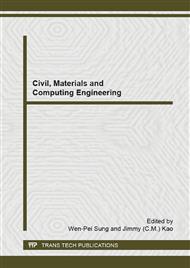p.807
p.812
p.816
p.820
p.824
p.828
p.833
p.837
p.843
The Key Technology for the Implementation of Direct-Production of Radio-Frequency Based on SDR Platform
Abstract:
RFID (Radio Frequency Identification) has been playing an important role in the construction and development of Internet of things, for its status as the base and heart of Internet of things, and it also contains a huge market. But at present the judgment criteria and core products in the field of RFID are all tied down by other countries, those companies in our country who need to use RFID not only have to pay for an immense amount of patent royalties, but also have to be ready for the Information security risks at any time. In order to achieve the independent innovation of RFID and meet the RFID system developing demand in our country, there are some needs to do something to solve the problems related to key technology in RFID system, then to win ourselves the proprietary intellectual property rights and the standards system for radio frequency identification of our own.
Info:
Periodical:
Pages:
824-827
Citation:
Online since:
December 2014
Authors:
Price:
Сopyright:
© 2015 Trans Tech Publications Ltd. All Rights Reserved
Share:
Citation:


